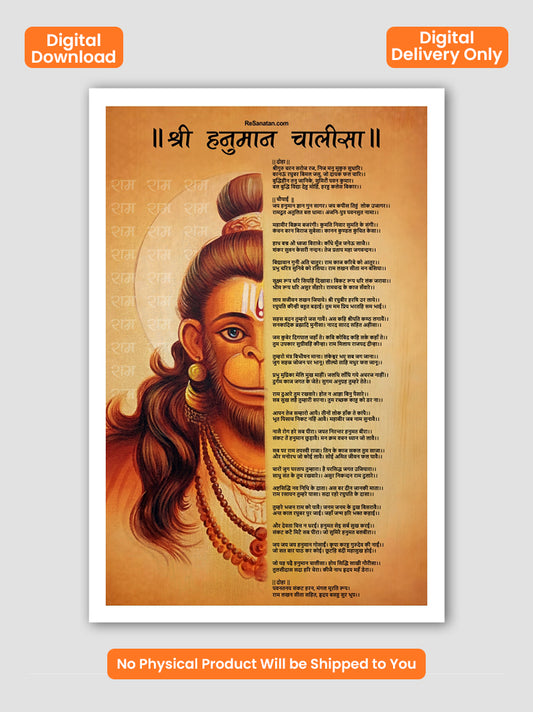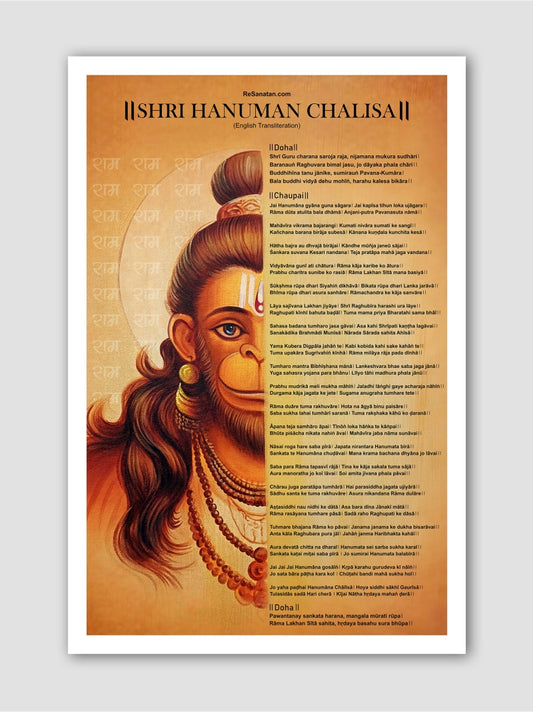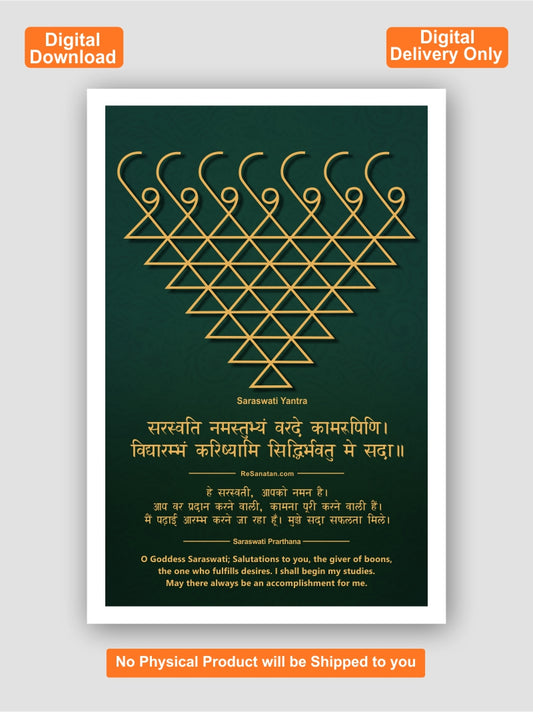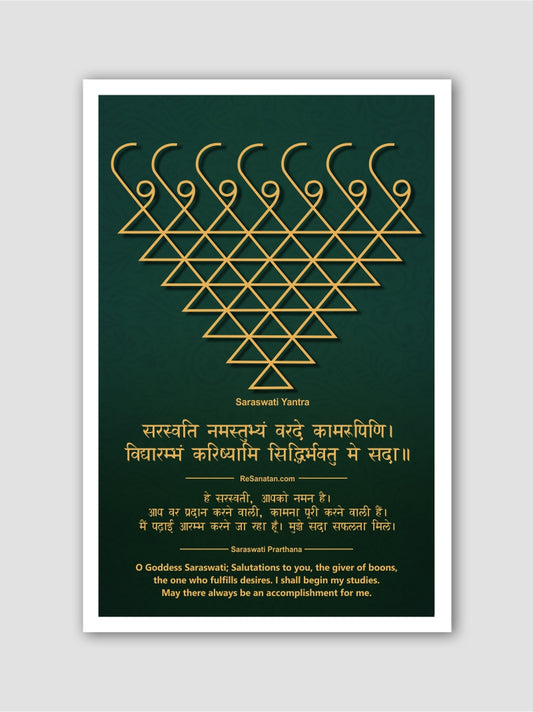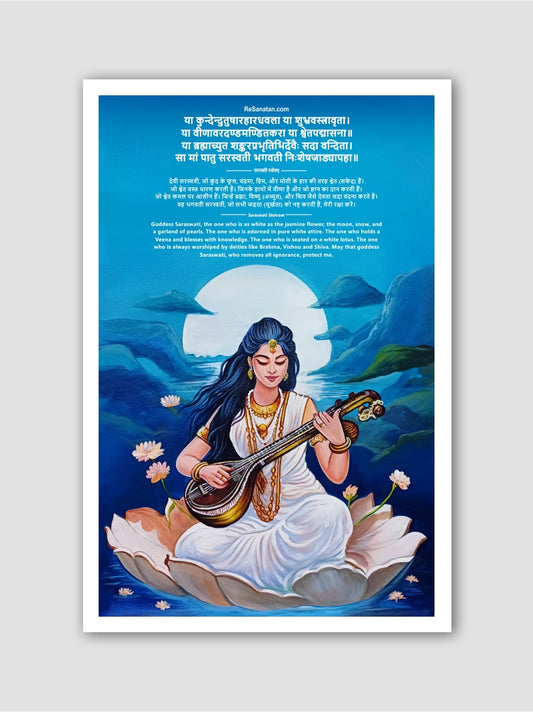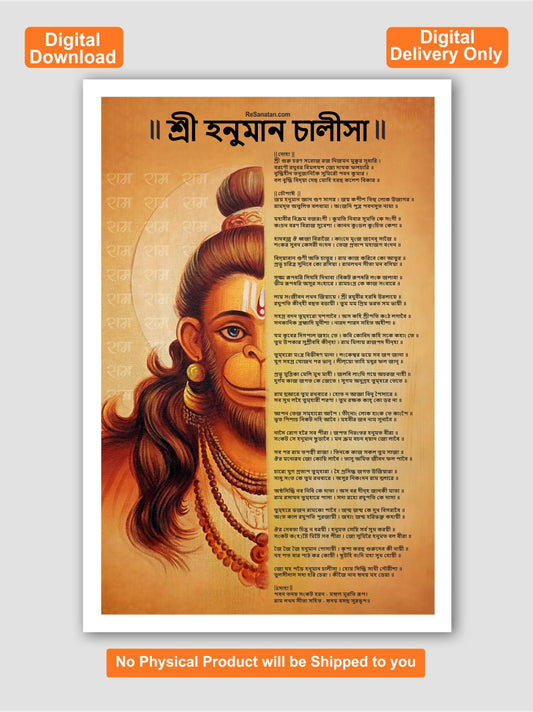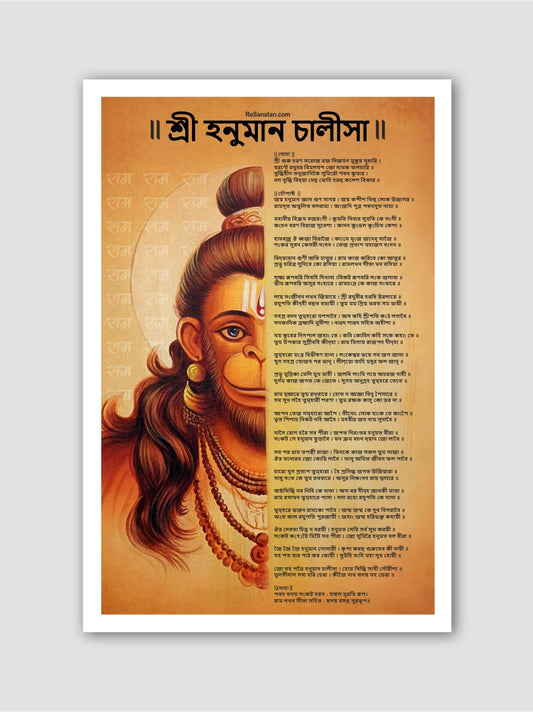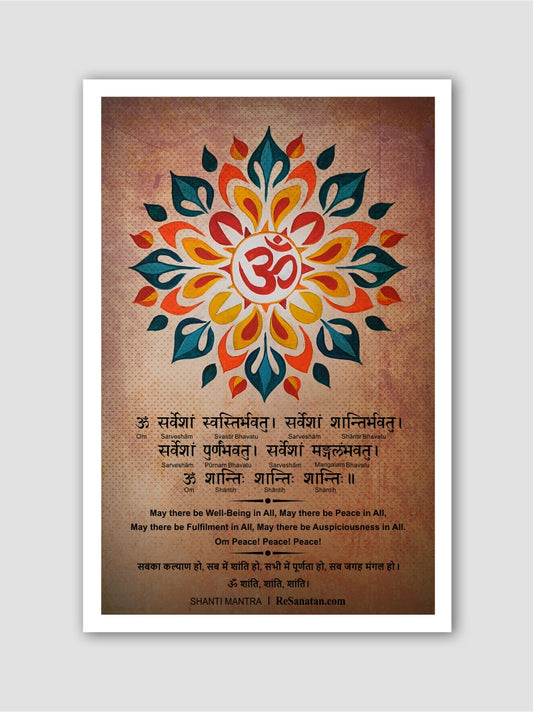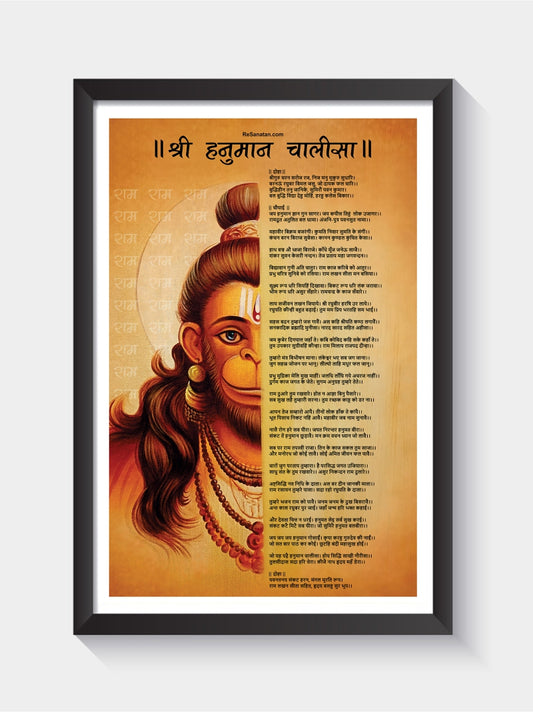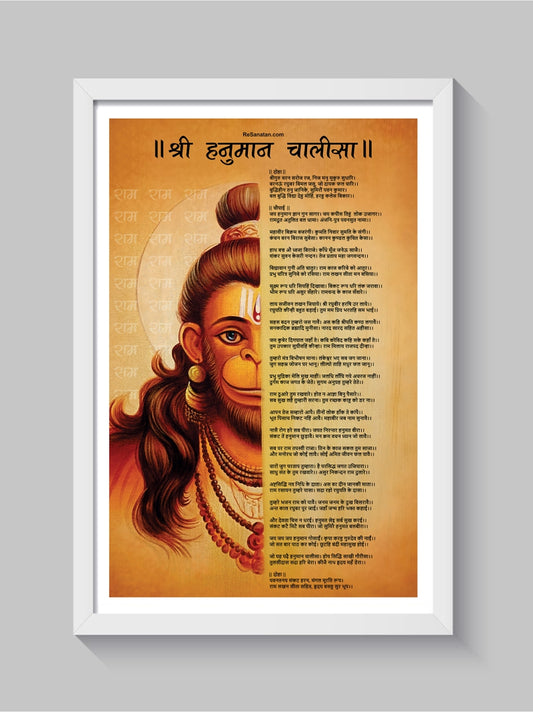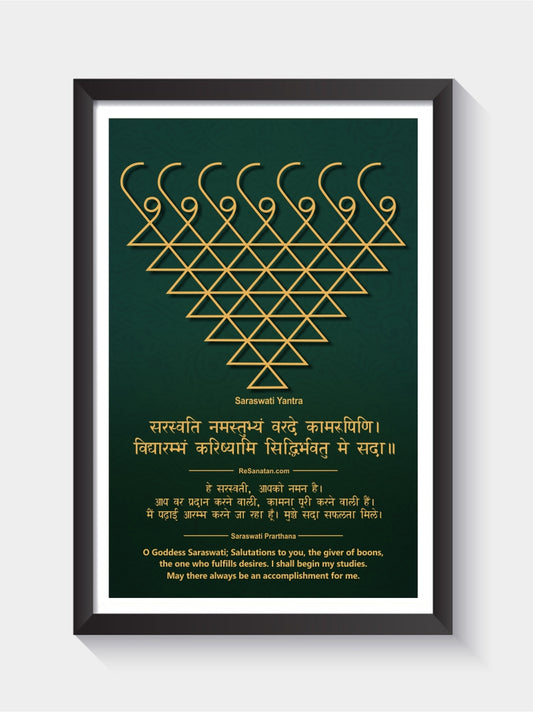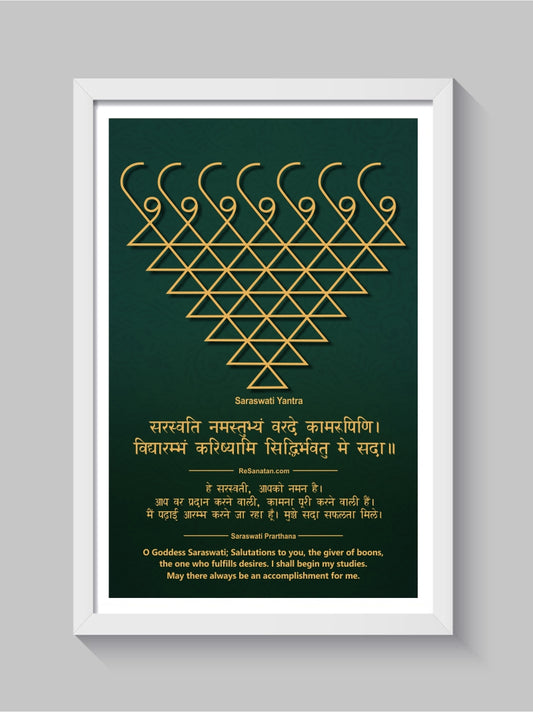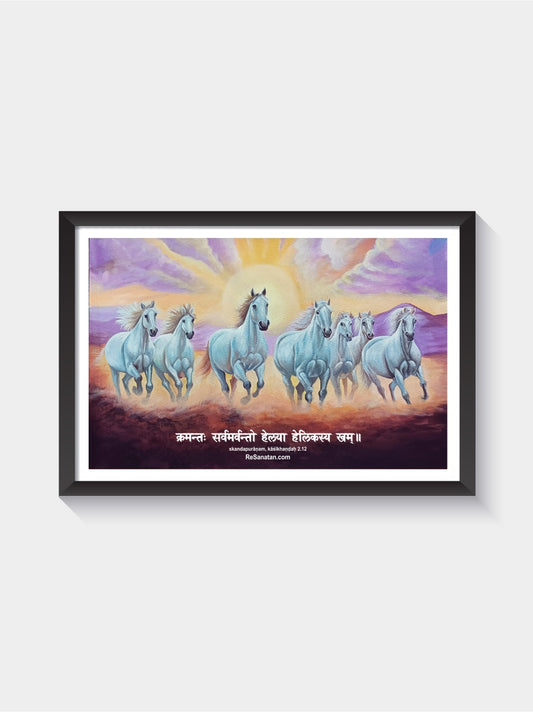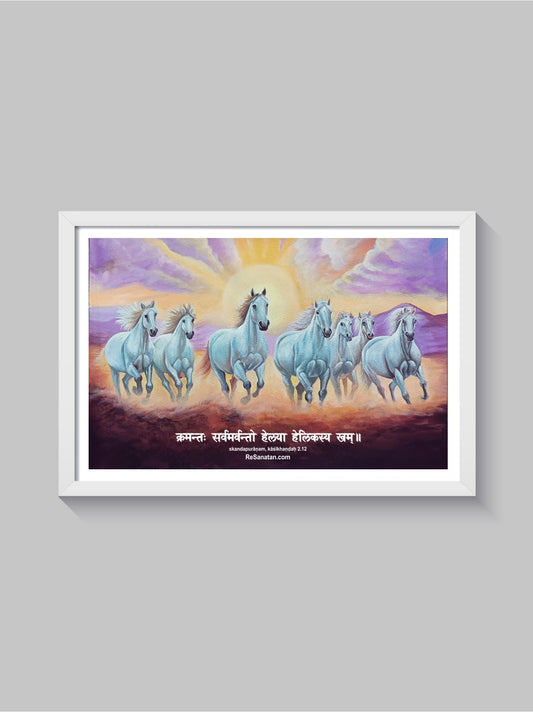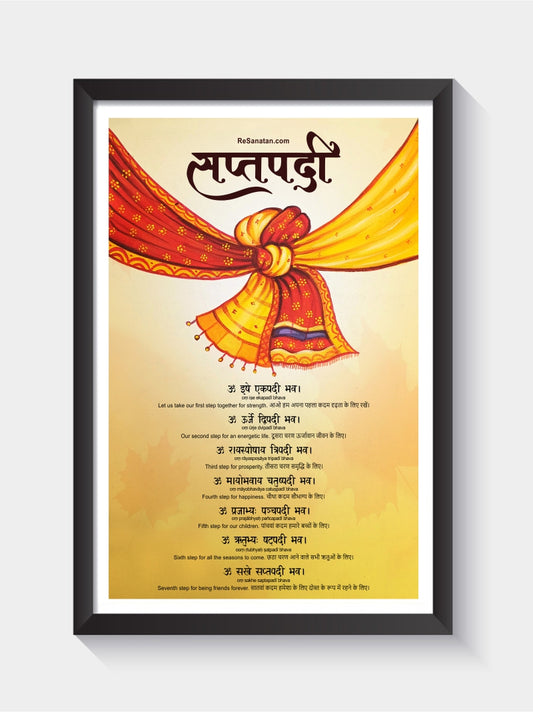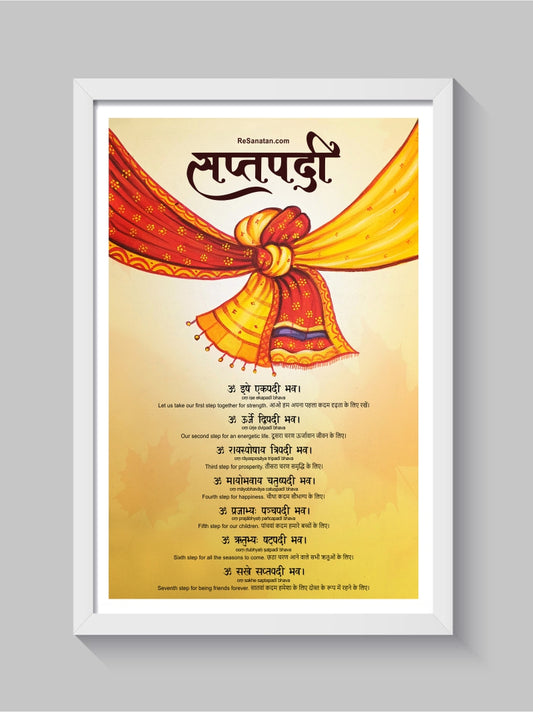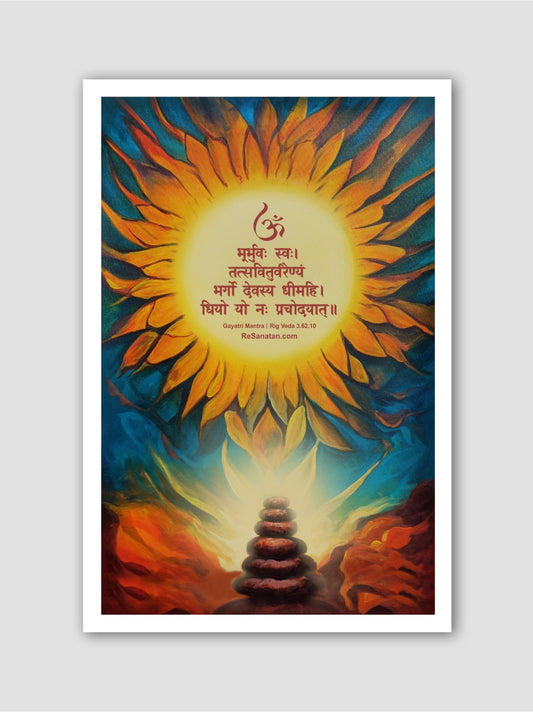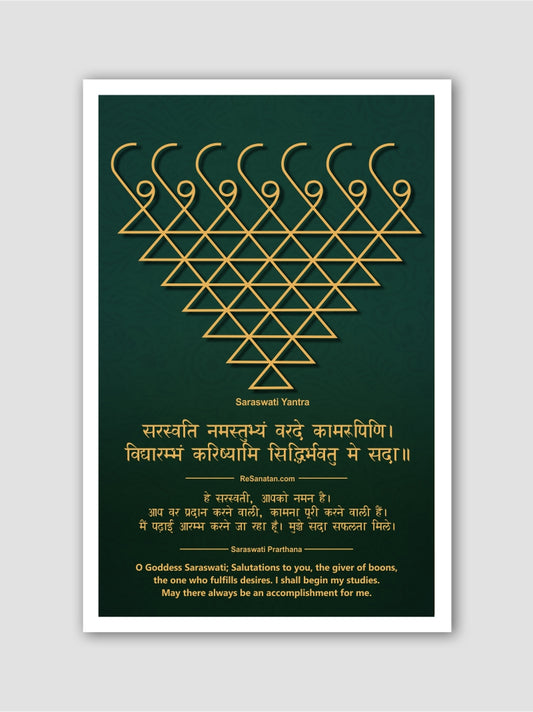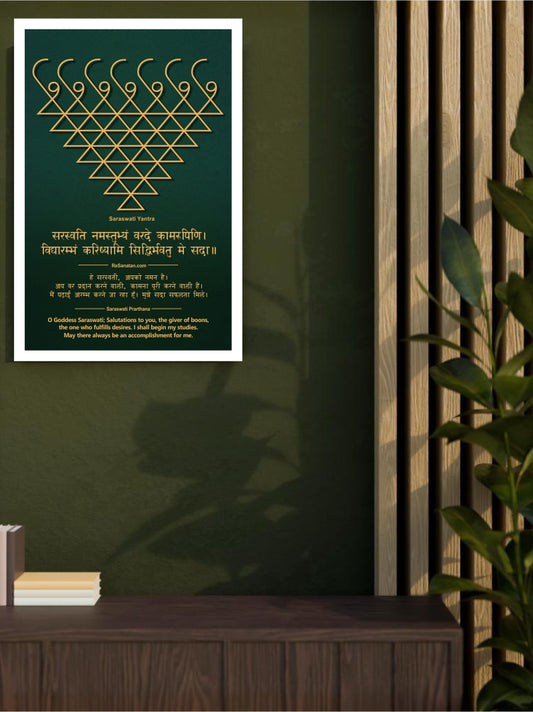Navratri: Nine Forms of Goddess Durga, Significance, Mantras, Rituals, Dates, Wishes, and Quotes
Share
Navratri, one of the most celebrated Hindu festivals, symbolizes the victory of good over evil and the triumph of righteousness. In 2025, Navratri will be observed from Mon, September 22 to Thu, October 2, 2025 with each of the nine days dedicated to a different form of Goddess Durga. These nine forms, collectively known as "Navadurga," represent the various aspects of Durga, who embodies strength, courage, and devotion. Navratri is also a time for prayer, fasting, and celebration.
The Nine Days of Navratri and Their Deities:
Day 1: Shailaputri (September 22, 2025)
Navratri's first day is dedicated to Maa Shailaputri, the daughter of the mighty Himalayas, also known as "Parvati" in her earlier life as Sati. The word "Shail" means mountain, and "Putri" means daughter, hence the name Shailaputri. She is the epitome of strength, purity, and devotion, and represents the Muladhara chakra, the root of all spiritual energy.
Iconography of Maa Shailaputri:
Maa Shailaputri is depicted riding a bull (Nandi), symbolizing her strong connection to nature and resilience. She carries a trident (Trishul) in her right hand, signifying her power to destroy negative forces, and a lotus in her left hand, representing purity and divine grace. A crescent moon adorns her forehead, and she is often seen dressed in white, signifying purity and calmness.
Significance of Day 1:
Worshipping Maa Shailaputri on the first day of Navratri is believed to bring stability and strength to devotees. She is known to purify the mind, body, and soul, instilling faith and devotion. This day marks the beginning of spiritual cleansing and awakening of inner consciousness.
Shailaputri’s worship signifies the first step of spiritual ascent. By invoking her blessings, devotees strengthen the Muladhara Chakra, which provides them with grounding energy and enables them to move forward in their spiritual journey.
Mantras for Maa Shailaputri:
1. ऊँ देवी शैलपुत्र्यै नमः॥
Transliteration: Om Devi Shailaputryai Namah
Meaning: Salutations to Goddess Shailaputri, the daughter of the mountain.
This mantra is chanted to invoke the blessings of Maa Shailaputri for strength, stability, and protection from negative energies.
2. वन्दे वाञ्छितलाभाय चन्द्रार्धकृतशेखराम्। वृषारुढां शूलधरां शैलपुत्रीं यशस्विनीम्॥
Transliteration: Vande Vanchhitalabhaya Chandrardhakrita-Shekharam, Vrisharudham Shuladharam Shailaputrim Yashasvinim
Meaning: I offer my salutations to the noble Goddess Shailaputri, who grants all wishes, who wears a half-moon on her head, who rides a bull, and who carries a trident.
This mantra is often recited during meditation to deepen the connection with the divine and align the mind, body, and spirit.
3. या देवी सर्वभूतेषु माँ शैलपुत्री रूपेण संस्थिता। नमस्तस्यै नमस्तस्यै नमस्तस्यै नमो नम:॥
Transliteration: Ya Devi Sarvabhuteshu Maa Shailaputri Rupena Samsthita, Namastasyai Namastasyai Namastasyai Namo Namah
Meaning: The divine goddess who resides in all beings in the form of Shailaputri, I bow to her repeatedly.
This mantra is chanted to express devotion and offer reverence to Maa Shailaputri. It acknowledges her presence in all beings and aspects of life, invoking her grace and protection.
Day 2: Brahmacharini (September 23, 2025)
The second day of Navratri is dedicated to Maa Brahmacharini, the embodiment of devotion, wisdom, and asceticism. “Brahmacharini” is derived from two words: “Brahma,” meaning penance or austerity, and “Charini,” meaning a female follower. She symbolizes the power of penance and determination and represents the unmarried form of Goddess Parvati when she performed severe penance to attain Lord Shiva as her husband.
Iconography of Maa Brahmacharini:
Maa Brahmacharini is depicted walking barefoot, signifying her life of austerity and devotion. She holds a rosary (Japa Mala) in her right hand and a Kamandalu (water pot) in her left hand, symbolizing penance and discipline. She radiates serenity, embodying the ideals of self-sacrifice, self-discipline, and spiritual focus.
Significance of Day 2:
The worship of Maa Brahmacharini on the second day of Navratri signifies the importance of perseverance, discipline, and penance in achieving spiritual goals. Her worship enhances the devotee's capacity to endure hardships, helping them maintain focus on their spiritual path. She is associated with the Swadhisthana Chakra, the sacral chakra, which governs creativity, self-worth, and emotional stability.
By worshipping Brahmacharini, devotees are blessed with the virtues of patience, self-control, and determination, enabling them to face life’s challenges with grace and fortitude.
Mantras for Maa Brahmacharini:
1. ऊँ देवी ब्रह्मचारिण्यै नमः॥
Transliteration: Om Devi Brahmacharinyai Namah
Meaning: I bow to Goddess Brahmacharini, the one who is the embodiment of austerity and devotion.
This mantra is chanted to invoke the blessings of Maa Brahmacharini for wisdom, self-discipline, and perseverance in the face of adversity.
2. दधाना कर पद्माभ्यामक्षमाला कमण्डलु।देवी प्रसीदतु मयि ब्रह्मचारिण्यनुत्तमा॥
Transliteration:Dadhana Kara Padmabhyam Akshamala Kamandalu,Devi Prasidatu Mayi Brahmacharinyanuttama.
Meaning:The Goddess who holds a rosary and water pot in her hands, may that supreme Brahmacharini bless me and fulfill my desires.
This mantra is recited to enhance concentration, patience, and devotion during penance or any spiritual practice.
3. या देवी सर्वभूतेषु माँ ब्रह्मचारिणी रूपेण संस्थिता।नमस्तस्यै नमस्तस्यै नमस्तस्यै नमो नम:॥
Transliteration:Ya Devi Sarvabhuteshu Maa Brahmacharini Rupena Samsthita,Namastasyai Namastasyai Namastasyai Namo Namah.
Meaning:The Goddess who resides in all beings in the form of Brahmacharini, I bow to her repeatedly.
This verse acknowledges the omnipresence of Maa Brahmacharini and offers reverence to her as the embodiment of asceticism and devotion.
Day 3: Chandraghanta (September 24, 2025)
The third day of Navratri is dedicated to Maa Chandraghanta, the warrior goddess who represents bravery, peace, and serenity. Her name, "Chandra" means moon, and "Ghanta" means bell. She is adorned with a half-moon on her forehead in the shape of a bell, symbolizing her readiness for battle and her deep connection with cosmic energy. Maa Chandraghanta is known for her fierce yet calm demeanor and is worshipped for courage, grace, and the ability to overcome obstacles.
Iconography of Maa Chandraghanta:
Maa Chandraghanta rides a tiger, representing bravery and fearlessness. She has ten arms, each holding a weapon such as a mace, trident, bow, arrow, sword, and a rosary. She holds a lotus in one hand, symbolizing her grace, and another hand is in a posture of blessing her devotees. The bell-shaped crescent moon on her forehead symbolizes the sound that purifies negativity, and her fierce form represents the destruction of evil forces.
Significance of Day 3:
Worshipping Maa Chandraghanta on the third day of Navratri signifies the destruction of fear, evil, and ignorance. She is the symbol of strength and valor, and her worship brings peace and prosperity to the devotees. Maa Chandraghanta also signifies the transformation from a peaceful form to a warrior form to protect her devotees from harm. She is associated with the Manipura Chakra (solar plexus), which represents power, determination, and confidence.
Her blessings are believed to remove obstacles and bestow courage and confidence, helping devotees face their challenges with grace and peace of mind.
Mantras for Maa Chandraghanta:
1. ऊँ देवी चन्द्रघण्टायै नमः॥
Transliteration: Om Devi Chandraghantayai Namah
Meaning: I bow to Goddess Chandraghanta, the one who brings peace and destroys evil forces.
This mantra is recited to seek the protection and blessings of Maa Chandraghanta. It invokes courage, fearlessness, and the power to overcome challenges in life.
2. पिण्डजप्रवरारूढ़ा चण्डकोपास्त्रकैर्युता। प्रसादं तनुते मह्यं चन्द्रघण्टा यशस्विनी॥
Transliteration: Pindajapravararudha Chandakopastrakairyuta, Prasadam Tanute Mahyam Chandraghanta Yashasvini.
Meaning: The Goddess who rides a fierce lion and holds powerful weapons, may that revered Chandraghanta bless me with her grace.
This mantra is recited to deepen one's connection with Maa Chandraghanta and to seek her blessings for bravery and mental strength in challenging situations.
3. या देवी सर्वभूतेषु माँ चन्द्रघण्टा रूपेण संस्थिता। नमस्तस्यै नमस्तस्यै नमस्तस्यै नमो नम:॥
Transliteration: Ya Devi Sarvabhuteshu Maa Chandraghanta Rupena Samsthita, Namastasyai Namastasyai Namastasyai Namo Namah.
Meaning: The goddess who resides in all beings in the form of Chandraghanta, I bow to her repeatedly.
This verse praises Maa Chandraghanta as the embodiment of strength and courage. Chanting this mantra invokes her divine presence to overcome fear and evil.
Day 4: Kushmanda (September 25, 2025)
The fourth day of Navratri is dedicated to Maa Kushmanda, the creator of the universe. Her name is a combination of three words: "Ku" (little), "Ushma" (energy), and "Anda" (cosmic egg). It is believed that she created the universe with her radiant smile, bringing light and energy into the darkness that existed before creation. Maa Kushmanda is revered as the Goddess of energy, vitality, and creativity.
Iconography of Maa Kushmanda:
Maa Kushmanda is depicted with a radiant and glowing face, symbolizing her role as the creator of light in the universe. She rides a lion, representing courage and strength. She has eight arms, each carrying a weapon or divine item: a discus, a mace, a bow, an arrow, a lotus, a rosary, a jar of nectar (Amrit), and a kamandalu (water pot). This form of Durga is also known as Ashtabhuja Devi, the goddess with eight arms.
Significance of Day 4:
The worship of Maa Kushmanda on the fourth day of Navratri is believed to bring vitality, health, and prosperity. She is associated with the creation of life and the nurturing of all beings in the universe. Her worship signifies the importance of light, energy, and creativity in our lives. She governs the Anahata Chakra (heart chakra), which is the center of compassion, love, and emotional balance.
By worshipping Maa Kushmanda, devotees are blessed with creativity, power, and positive energy to overcome obstacles in their personal and spiritual lives.
Mantras for Maa Kushmanda:
1. ऊँ देवी कूष्माण्डायै नमः॥
Transliteration: Om Devi Kushmandayai Namah
Meaning: I bow to Goddess Kushmanda, the creator of the universe and the source of all energy.
This mantra is chanted to invoke Maa Kushmanda’s blessings for health, energy, and vitality. It is believed that chanting this mantra brings positive energy and success in all endeavors.
2. सुरासम्पूर्णकलशं रूधिराप्लुतमेव च। दधाना हस्तपद्माभ्यां कूष्माण्डा शुभदास्तु मे॥
Transliteration: Surasampurnakalasham Rudhiraplutameva Cha, Dadhana Hastapadmabhyam Kushmanda Shubhadastu Me.
Meaning: The Goddess who holds a jar of nectar and blood-filled vessels, may that Kushmanda bless me with auspiciousness and success.
This mantra is recited to focus on Maa Kushmanda’s divine energy and to seek her blessings for prosperity and health.
3. या देवी सर्वभूतेषु माँ कूष्माण्डा रूपेण संस्थिता। नमस्तस्यै नमस्तस्यै नमस्तस्यै नमो नम:॥
Transliteration: Ya Devi Sarvabhuteshu Maa Kushmanda Rupena Samsthita, Namastasyai Namastasyai Namastasyai Namo Namah.
Meaning: The goddess who resides in all beings in the form of Kushmanda, I bow to her repeatedly.
This verse praises Maa Kushmanda as the source of creation and life. Chanting this mantra invokes her blessings for strength, vitality, and a harmonious life.
Day 5: Skandamata (September 26, 2025)
The fifth day of Navratri is dedicated to Maa Skandamata, the mother of Lord Kartikeya (also known as Skanda), the commander of the divine armies. In this form, Maa Durga is seen nurturing her child while also being a fierce protector. Skandamata represents the motherly aspect of the divine and embodies the power of motherhood, compassion, and protection.
Iconography of Maa Skandamata:
Maa Skandamata is depicted riding a lion, symbolizing her fierce and protective nature. She holds Lord Skanda (Kartikeya) on her lap, demonstrating her role as a nurturing mother. She has four arms—two arms carry lotus flowers, one hand holds baby Skanda, and her fourth hand is raised in a gesture of blessing and protection. Her radiant complexion signifies her divine and calm nature.
Significance of Day 5:
Worshipping Maa Skandamata on the fifth day of Navratri emphasizes the importance of motherly love, protection, and nurturing. She signifies the strong bond between a mother and her child, and her blessings ensure protection and success for one’s progeny. Skandamata is also a symbol of courage and strength, as she protects her devotees from harm. She governs the Vishuddha Chakra (Throat Chakra), which is associated with communication, expression, and purity of thought.
By worshipping Maa Skandamata, devotees are blessed with wisdom, power, and the ability to overcome obstacles through love and compassion.
Mantras for Maa Skandamata:
1. ऊँ देवी स्कन्दमातायै नमः॥
Transliteration: Om Devi Skandamatayai Namah
Meaning: I bow to Goddess Skandamata, the mother of Lord Skanda, who blesses her devotees with love and protection.
This mantra is recited to invoke the blessings of Maa Skandamata for health, protection, and the well-being of one’s children.
2. सिंहासनगता नित्यं पद्माश्रितकरद्वया।शुभदास्तु सदा देवी स्कन्दमाता यशस्विनी॥
Transliteration: Simhasanagata Nityam Padmashritakaradvaya,Shubhadastu Sada Devi Skandamata Yashasvini.
Meaning:The Goddess who sits on a lion and holds lotus flowers, may that revered Skandamata always bless me with auspiciousness and success.
This mantra helps devotees focus on Maa Skandamata’s nurturing and protective energy, invoking her blessings for success and harmony in life.
3. या देवी सर्वभूतेषु माँ स्कन्दमाता रूपेण संस्थिता।नमस्तस्यै नमस्तस्यै नमस्तस्यै नमो नम:॥
Transliteration:Ya Devi Sarvabhuteshu Maa Skandamata Rupena Samsthita,Namastasyai Namastasyai Namastasyai Namo Namah.
Meaning:The goddess who resides in all beings in the form of Skandamata, I bow to her repeatedly.
This mantra praises Maa Skandamata for her nurturing qualities, invoking her blessings for protection, wisdom, and emotional well-being.
Day 6: Katyayani (September 27, 2025)
The sixth day of Navratri is dedicated to Maa Katyayani, the fierce and warrior form of Goddess Durga. She is one of the most powerful manifestations of Durga and is revered as the Goddess of strength, courage, and victory. Maa Katyayani was born to the sage Katyayana, after whom she is named, and she is known for her fierce battle against the demon Mahishasura. Her worship is believed to grant victory over evil forces and remove obstacles from one's life.
Iconography of Maa Katyayani:
Maa Katyayani is depicted riding a lion, symbolizing her fearlessness and valor. She has four arms—two arms carry a sword and a lotus, while the other two are in a posture of blessing and protection. Her radiant form is adorned with gold ornaments, and she appears ready for battle, demonstrating her strength and warrior-like nature. Her divine presence is believed to remove fear and instill confidence and bravery.
Significance of Day 6:
The worship of Maa Katyayani on the sixth day of Navratri is especially important for those seeking courage, strength, and victory. She represents the destruction of negative forces and the triumph of righteousness. Her blessings remove fear, obstacles, and hardships from the lives of her devotees. Maa Katyayani is associated with the Ajna Chakra (Third Eye Chakra), which symbolizes intuition, clarity, and vision.
By worshipping Maa Katyayani, devotees are empowered with strength, confidence, and the ability to overcome challenges and achieve their goals.
Mantras for Maa Katyayani:
1. ऊँ देवी कात्यायन्यै नमः॥
Transliteration: Om Devi Katyayanyai Namah
Meaning: I bow to Goddess Katyayani, the one who bestows strength and victory upon her devotees.
This mantra is chanted to invoke the blessings of Maa Katyayani for courage, protection, and success in overcoming obstacles.
2. चन्द्रहासोज्जवलकरा शार्दूलवरवाहना।कात्यायनी शुभं दद्याद्देवी दानवघातिनी॥
Transliteration: Chandrahasojjvalakara Shardulavaravahana,Katyayani Shubham Dadyad Devi Danavaghatini.
Meaning: The Goddess who shines like the moon, riding a lion, and destroys demons, may that revered Katyayani bestow her blessings upon me.
This mantra is recited to focus on Maa Katyayani’s fierce and protective energy, invoking her blessings for strength and victory over negative forces.
3. या देवी सर्वभूतेषु माँ कात्यायनी रूपेण संस्थिता।नमस्तस्यै नमस्तस्यै नमस्तस्यै नमो नम:॥
Transliteration: Ya Devi Sarvabhuteshu Maa Katyayani Rupena Samsthita,Namastasyai Namastasyai Namastasyai Namo Namah.
Meaning: The goddess who resides in all beings in the form of Katyayani, I bow to her repeatedly.
This stuti praises Maa Katyayani for her ability to remove obstacles and grant success. Chanting this mantra invokes her divine presence and ensures protection from harm.
Day 7: Kalaratri (September 28, 2025)
The seventh day of Navratri is dedicated to Maa Kalaratri, the most ferocious and fearsome form of Goddess Durga. Maa Kalaratri symbolizes the destruction of evil, ignorance, and darkness. Her name is derived from two words: "Kala" meaning time or death, and "Ratri" meaning night, representing the force that ends darkness and negativity. She is also known as Shubankari, the one who brings auspiciousness and removes fear.
Iconography of Maa Kalaratri:
Maa Kalaratri has a dark complexion and a terrifying appearance, which symbolizes the destruction of evil forces. She has disheveled hair, and her eyes radiate fire. She rides a donkey (symbolizing humility) and has four arms. Two hands hold a scimitar and a vajra (thunderbolt), while the other two are in the Abhaya (protection) and Varada (blessing) mudras, assuring her devotees that they have nothing to fear. Despite her fearsome appearance, she blesses her devotees with protection, courage, and peace.
Significance of Day 7:
Maa Kalaratri is worshipped to overcome fears and to destroy negative forces. Her worship signifies the elimination of evil and ignorance, both within and outside. By invoking Maa Kalaratri, devotees seek her blessings for the removal of obstacles and the destruction of any negative influences in their lives. Maa Kalaratri is associated with the Sahasrara Chakra (Crown Chakra), which represents enlightenment and spiritual awakening.
Through the worship of Maa Kalaratri, devotees are blessed with fearlessness, strength, and the courage to face challenges. She protects them from evil forces and helps them attain spiritual liberation.
Mantras for Maa Kalaratri:
1. ऊँ देवी कालरात्र्यै नमः॥
Transliteration: Om Devi Kalaratryai Namah
Meaning: I bow to Goddess Kalaratri, the one who destroys evil and brings auspiciousness.
This mantra is chanted to invoke Maa Kalaratri’s protection and to remove fear, negativity, and evil from one’s life.
2. एकवेणी जपाकर्णपूरा नग्ना खरास्थिता।लम्बोष्टी कर्णिकाकर्णी तैलाभ्यक्तशरीरिणी॥वामपादोल्लसल्लोहलताकण्टकभूषणा।वर्धनमूर्धध्वजा कृष्णा कालरात्रिर्भयङ्करी॥
Transliteration: Ekaveni Japakarnapura Nagna Kharasthita,Lamboshti Karnikakarni Tailabhyaktasharirini.Vamapadol-Lasal-Loha Latakantaka Bhushana,Vardhanamurdhadhvaja Krishna Kalaratrir Bhayankari.
Meaning: The goddess who has disheveled hair, a terrifying appearance, and a body smeared with oil, she rides a donkey and wears a garland of lightning. I meditate on the fearsome Kalaratri, the destroyer of darkness and fear.
This mantra is recited to deeply connect with Maa Kalaratri’s divine power and to invoke her blessings for courage and the removal of darkness.
3. या देवी सर्वभूतेषु माँ कालरात्रि रूपेण संस्थिता।नमस्तस्यै नमस्तस्यै नमस्तस्यै नमो नम:॥
Transliteration: Ya Devi Sarvabhuteshu Maa Kalaratri Rupena Samsthita,Namastasyai Namastasyai Namastasyai Namo Namah.
Meaning: The goddess who resides in all beings in the form of Kalaratri, I bow to her repeatedly.
This stuti praises Maa Kalaratri as the force that destroys evil and darkness. Chanting this mantra invokes her divine protection and ensures peace and courage in life.
Day 8: Mahagauri (September 29, 2025)
The eighth day of Navratri is dedicated to Maa Mahagauri, the symbol of purity, serenity, and tranquility. Her name is derived from "Maha," meaning great, and "Gauri," meaning white or radiant, symbolizing her glowing, fair complexion and purity. Maa Mahagauri represents peace, calmness, and the power to purify the soul of all its sins. Worshipping her helps in removing all forms of suffering and brings peace, prosperity, and spiritual growth.
Iconography of Maa Mahagauri:
Maa Mahagauri is depicted riding a bull (Nandi), symbolizing strength and determination. She has four arms—one hand holds a trident (Trishul), symbolizing power, and another hand holds a damaru (small drum), symbolizing wisdom and knowledge. Her other two hands are in the Abhaya Mudra (protection) and Varada Mudra (blessing), assuring her devotees of safety and fulfillment. Her attire and complexion are pure white, symbolizing her inherent purity and divinity.
Significance of Day 8:
Maa Mahagauri represents the purification of the soul, elimination of all past sins, and bestowal of wisdom and peace. Her worship is particularly significant for those seeking spiritual progress, inner peace, and release from the cycle of birth and rebirth. Maa Mahagauri also signifies the maturity and wisdom that comes with spiritual growth. Her blessings help cleanse the mind, body, and soul. She is associated with the Sahasrara Chakra (Crown Chakra), which symbolizes spiritual enlightenment and connection with the divine.
By worshipping Maa Mahagauri, devotees can purify their souls, attain peace, and be blessed with knowledge and spiritual liberation.
Mantras for Maa Mahagauri:
1. ऊँ देवी महागौर्यै नमः॥
Transliteration: Om Devi Mahagauryai Namah
Meaning: I bow to Goddess Mahagauri, the one who bestows purity, peace, and spiritual enlightenment.
This mantra is recited to invoke the blessings of Maa Mahagauri for purity, wisdom, and inner peace.
2. श्वेते वृषे समारूढा श्वेताम्बरधरा शुचिः।महागौरी शुभं दद्यान्महादेवप्रमोददा॥
Transliteration: Shvete Vrishae Samarudha Shvetambaradhara Shuchi,Mahagauri Shubham Dadyan Mahadevapramodada.
Meaning: The goddess, who rides a white bull and is adorned in pure white garments, may that revered Mahagauri, who brings joy to Lord Shiva, bless me with peace and auspiciousness.
This mantra is recited to connect with Maa Mahagauri’s serene energy and to seek her blessings for purity, peace, and spiritual growth.
3. या देवी सर्वभूतेषु माँ महागौरी रूपेण संस्थिता।नमस्तस्यै नमस्तस्यै नमस्तस्यै नमो नमः॥
Transliteration: Ya Devi Sarvabhuteshu Maa Mahagauri Rupena Samsthita,Namastasyai Namastasyai Namastasyai Namo Namah.
Meaning: The goddess who resides in all beings in the form of Mahagauri, I bow to her repeatedly.
This stuti praises Maa Mahagauri for her purity and blessings. Chanting this mantra invokes her divine grace to remove past sins and bring peace to the soul.
Day 9: Siddhidatri (September 30, 2025)
The ninth and final day of Navratri is dedicated to Maa Siddhidatri, the goddess who grants Siddhis (supernatural powers) and perfection. "Siddhi" means accomplishment or perfection, and "Datri" means giver, making Maa Siddhidatri the giver of divine powers and success in life. She is worshipped by not only humans but also gods, demons, and sages. By her grace, Lord Shiva attained the form of Ardhanarishvara, half-man and half-woman, which signifies the union of masculine and feminine energies.
Iconography of Maa Siddhidatri:
Maa Siddhidatri is depicted sitting on a lotus and sometimes riding a lion, symbolizing the awakening of supreme powers. She has four arms—one hand holds a discus, another holds a mace, while the other two hold a lotus flower and a conch shell. She appears serene and calm, symbolizing the state of perfection and wisdom that she bestows on her devotees.
Significance of Day 9:
The worship of Maa Siddhidatri on the ninth day of Navratri is particularly important for those seeking spiritual enlightenment and divine powers. Siddhidatri is the goddess who blesses her devotees with Ashta Siddhis, the eight supernatural powers that can bring success in both material and spiritual realms. These Siddhis include Anima (shrinking to a small size), Mahima (expanding to a large size), Garima (becoming heavy), and Laghima (becoming light). Her blessings ensure that her devotees attain not just worldly success, but also spiritual knowledge and peace.
Maa Siddhidatri is associated with the Sahasrara Chakra (Crown Chakra), which symbolizes spiritual enlightenment and divine consciousness.
Mantras for Maa Siddhidatri:
1. ऊँ देवी सिद्धिदात्र्यै नमः॥
Transliteration: Om Devi Siddhidatryai Namah
Meaning: I bow to Goddess Siddhidatri, the giver of Siddhis and divine powers.
This mantra is chanted to invoke the blessings of Maa Siddhidatri for attaining perfection, success, and spiritual knowledge.
2. सिद्धगन्धर्वयक्षाघैरसुरैरमरैरपि।सेव्यमाना सदा भूयात् सिद्धिदा सिद्धिदायिनी॥
Transliteration: Siddha Gandharva Yakshadhyaih Asuraih Amarairapi,Sevyamana Sada Bhuyat Siddhida Siddhidayini.
Meaning: The Goddess who is served by Siddhas, Gandharvas, Yakshas, Demons, and Gods alike, may that revered Siddhidatri always bestow success and supernatural powers upon me.
This mantra is recited to connect with Maa Siddhidatri’s divine energy and seek her blessings for perfection and spiritual accomplishments.
3. या देवी सर्वभूतेषु माँ सिद्धिदात्री रूपेण संस्थिता।नमस्तस्यै नमस्तस्यै नमस्तस्यै नमो नमः॥
Transliteration: Ya Devi Sarvabhuteshu Maa Siddhidatri Rupena Samsthita,Namastasyai Namastasyai Namastasyai Namo Namah.
Meaning: The goddess who resides in all beings in the form of Siddhidatri, I bow to her repeatedly.
This stuti praises Maa Siddhidatri for her divine grace and ability to bestow supernatural powers and success. Chanting this mantra invokes her blessings for spiritual growth and accomplishment.
Importance and Significance of Navratri
Navratri, meaning "nine nights," is one of the most significant and widely celebrated Hindu festivals, dedicated to the worship of Goddess Durga in her nine divine forms. These nine days symbolize the victory of good over evil and the divine feminine energy known as Shakti. Observed with immense devotion across India and other parts of the world, Navratri marks a period of fasting, prayer, meditation, and celebration. It is celebrated twice a year: Chaitra Navratri (during spring) and Sharad Navratri (during autumn), with Sharad Navratri being the more widely celebrated one.
The festival's religious, spiritual, and cultural significance resonates deeply with millions of people, making it a time for both personal and collective spiritual growth.
Spiritual Importance of Navratri
Navratri holds deep spiritual meaning as it symbolizes the journey of the soul from ignorance to enlightenment. The nine nights are devoted to the worship of Maa Durga, who represents the supreme cosmic energy, and each night is associated with one of her nine forms, known as Navadurga. Through fasting, chanting mantras, meditating, and performing rituals, devotees aim to purify their hearts, minds, and souls during this period.
The ultimate goal of Navratri is to achieve spiritual purification, conquer inner darkness, and align with the divine cosmic energy.
Symbolism of Good over Evil
Navratri celebrates the triumph of good over evil, embodied in the battle between Goddess Durga and the demon Mahishasura. According to Hindu mythology, Mahishasura, a powerful demon, received a boon from Lord Brahma that he could not be defeated by any man or god. In his arrogance, he began terrorizing the heavens and earth. In response, the gods combined their powers to create Goddess Durga, an embodiment of divine feminine energy, to defeat Mahishasura. After a fierce battle, she emerged victorious on the tenth day, known as Vijayadashami or Dussehra.
This victory of Durga over Mahishasura symbolizes the defeat of ignorance, darkness, and evil forces that reside within every individual. It reminds devotees to remain steadfast in their faith and seek strength from the goddess to overcome obstacles in their own lives.
Cultural and Social Significance
Beyond its religious and spiritual aspects, Navratri also holds immense cultural and social significance:
1. Celebration of the Divine Feminine: Navratri honors the divine feminine energy (Shakti) that manifests in various forms of the goddess. It underscores the importance of women in society, recognizing their strength, resilience, and nurturing qualities.
2. Garba and Dandiya Raas: In many parts of India, especially in Gujarat, Navratri is synonymous with Garba and Dandiya Raas, traditional folk dances that are performed in honor of the goddess. These vibrant dance forms are a way for communities to come together and celebrate the festival with music, dance, and joy.
3. Fasting and Purification: Fasting is a significant aspect of Navratri. It is believed that fasting helps in purifying the mind, body, and soul, preparing the devotee for deeper spiritual experiences. People avoid consuming grains, meat, alcohol, and certain foods during this period, adhering to a sattvic (pure) diet to maintain spiritual discipline.
4. Navratri Pujas and Rituals: Throughout Navratri, families and communities come together to perform various rituals, including Ghatasthapana (Kalash Sthapana), Durga Puja, and Kanya Puja. Temples are adorned with lights and flowers, and special prayers and offerings are made to the goddess. These rituals are believed to invoke the presence of the goddess and invite her blessings for the well-being and prosperity of devotees.
5. Kanya Puja: On Ashtami or Navami, the eighth or ninth day of Navratri, a special ritual called Kanya Puja is performed, where young girls (Kumaris) are worshipped as incarnations of the goddess. They are offered food, gifts, and new clothes as a way of honoring the divine feminine.
6. Celebration of Dussehra: The culmination of Navratri leads to the celebration of Dussehra or Vijayadashami, marking the victory of Lord Rama over the demon king Ravana, symbolizing the triumph of good over evil. Huge effigies of Ravana, his brother Kumbhkaran, and son Meghnath are burned, symbolizing the destruction of evil forces.
Navratri Wishes and Quotes
Here’s a collection of Navratri wishes and quotes that you can share with your friends, family, and loved ones to convey your heartfelt blessings during this auspicious festival.

Navratri Wishes
1. May this Navratri bring happiness, prosperity, and success to your life. May the divine blessings of Maa Durga always be with you. Shubh Navratri!
2. Wishing you nine nights of devotion, spirituality, and happiness. May the goddess bless you with good health and prosperity. Happy Navratri!
3. May the divine energy of Goddess Durga bless you with inner strength and confidence to conquer all challenges in life. Have a blessed Navratri!
4. As we celebrate the victory of good over evil, may Maa Durga guide you towards the path of righteousness and fill your heart with joy. Happy Navratri!
5. May Maa Durga illuminate your life with countless blessings of happiness, success, and prosperity. Wishing you and your family a joyful Navratri!
6. Let us come together to honor Maa Durga and seek her blessings for a prosperous, healthy, and joyous life. Shubh Navratri to you and your family!
7. May the divine blessings of Maa Durga give you the strength to tackle all obstacles in life. May you have a prosperous and joyful Navratri!
8. Navratri is the time to share and care. May Goddess Durga bless you with health, wealth, and happiness. Happy Navratri!
9. May Maa Durga protect you and your family from all harm, and may she bless you with peace, happiness, and good fortune. Happy Navratri!
10. On this auspicious occasion of Navratri, may Maa Durga fill your home with good fortune and blessings. Wishing you a very Happy Navratri!
Navratri Quotes
1. "Navratri is a celebration of inner strength and divine power. May you be filled with the grace and blessings of Maa Durga."
2. "The goddess Durga is a symbol of power, strength, and courage. Let us honor her by embracing these qualities in our own lives. Happy Navratri!"
3. "With the blessings of Maa Durga, may all your worries turn into happiness, your obstacles into opportunities, and your efforts into achievements. Shubh Navratri!"
4. "Let us celebrate the victory of good over evil, the triumph of truth over lies, and the power of positivity over negativity. Happy Navratri!"
5. "Navratri is the festival of pure devotion and joy. May Maa Durga bless you with all that you desire and more. Wishing you a joyous Navratri!"
6. "May the nine divine nights of Navratri bring joy, peace, and prosperity to your life. May Maa Durga’s blessings be with you always!"
7. "Navratri teaches us to awaken the divine within ourselves. May the goddess bless you with wisdom, strength, and the courage to follow your dreams."
8. "The festival of Navratri is not just about rituals and celebrations; it’s about awakening the inner power and finding the strength to overcome the odds."
9. "As we light the lamp of devotion, may Maa Durga bless our lives with happiness, prosperity, and peace. Happy Navratri!"
10. "On this holy occasion of Navratri, may the goddess protect you from all harm, guide you toward righteousness, and fill your life with peace and joy."
Special Navratri Wishes for Each Day
Day 1 (Shailaputri): "On this first day of Navratri, may Maa Shailaputri bless you with strength, devotion, and happiness. Shubh Navratri!"
Day 2 (Brahmacharini): "May Maa Brahmacharini inspire you to lead a life of devotion, peace, and spirituality. Happy Navratri!"
Day 3 (Chandraghanta): "As you worship Maa Chandraghanta today, may she bless you with courage and success. Jai Mata Di!"
Day 4 (Kushmanda): "Wishing you the energy, prosperity, and joy that Maa Kushmanda brings on this day of Navratri!"
Day 5 (Skandamata): "On this blessed day of Navratri, may Maa Skandamata bless your family with happiness and peace."
Day 6 (Katyayani): "May the fierce energy of Maa Katyayani protect you from evil and guide you to success. Shubh Navratri!"
Day 7 (Kalaratri): "On this day, may Maa Kalaratri protect you from all negativity and darkness. Jai Mata Di!"
Day 8 (Mahagauri): "Wishing you a blessed Ashtami. May Maa Mahagauri purify your soul and fill your life with peace and wisdom."
Day 9 (Siddhidatri): "On the final day of Navratri, may Maa Siddhidatri grant you success, wisdom, and divine blessings."
Navratri Wishes in Sanskrit
Here are some Navratri wishes in Sanskrit along with their English translations:
1. सर्वेषां सुखिनो भवंतु, सर्वेषां मंगलं भवतु। नवरात्रेः महापर्वस्य शुभकामनाः।
Translation: May everyone be happy, may everyone be prosperous. Wishing you the blessings of the great festival of Navratri.
2. नवरात्रि उत्सवे सर्वे भक्त्या युक्ताः सन्तु। दुर्गा देव्या: कृपा सर्वेभ्यः दत्तां भवतु। शुभ नवरात्रिः।
Translation: May all be filled with devotion during the Navratri festival. May Goddess Durga bless everyone with her divine grace. Happy Navratri!
3. शुभं, शान्तिं, समृद्धिं च सर्वेषां जीवनं सदा भवतु। नवरात्रेः शुभाशयाः।
Translation: May your life always be filled with happiness, peace, and prosperity. Best wishes for Navratri.
4. मां दुर्गा सर्वान् अज्ञानं, दुःखं च नाशयतु। सर्वेषां जीवनं आन्नन्देन् पूर्यते। शुभ नवरात्रि।
Translation: May Goddess Durga remove all ignorance and sorrow. May everyone's life be filled with joy. Happy Navratri!
5. मां दुर्गायाः आशीर्वादः सर्वेषां उपरि अस्तु। आयुः, आरोग्यं, ऐश्वर्यं च सदा भवतु। नवरात्रिः शुभमस्तु।
Translation: May the blessings of Maa Durga be upon all. May you be blessed with long life, health, and prosperity. Happy Navratri!
6. सर्वं मंगलं प्राप्तु, सर्वं सिद्धिं ददातु। दुर्गा माता सर्वान् रक्षतु। नवरात्रिः शुभमस्तु।
Translation: May you attain all success and prosperity. May Goddess Durga protect everyone. Happy Navratri!
7. दुर्गा माता सर्वानां कृपया वर्धतु, दुष्टं नाशयतु, शुभं कुर्यात्। नवरात्रेः शुभाशयाः।
Translation: May Goddess Durga bless all with her grace, destroy evil, and bring forth goodness. Best wishes for Navratri.
8. शान्तिः, समृद्धिः, सौभाग्यं च सर्वेषां जीवनं आलङ्कुर्वन्तु। नवरात्रिः मंगलमयः अस्तु।
Translation: May peace, prosperity, and good fortune adorn your life. Wishing you an auspicious Navratri.
9. दुर्गा देव्या: कृपा सर्वत्र सदा भवतु। जीवनं शुभं मंगलं च सदा अर्पयतु। शुभ नवरात्रिः।
Translation: May the grace of Goddess Durga always be with you and may she bestow blessings of happiness and prosperity. Happy Navratri!
10. नवरात्रि उत्सवे दुर्गा देव्या: आशीर्वादेन जीवनं आनन्दे पूर्यते। सर्वेषां मंगलं भवतु।
Translation: During the Navratri festival, may your life be filled with joy by the blessings of Goddess Durga. Wishing you all the best.
Conclusion:
Navratri is a festival of deep religious, spiritual, and cultural significance. It is a time for self-reflection, devotion, and celebration of the divine feminine energy that governs the universe. By observing Navratri, devotees seek to cleanse their souls, remove ignorance, and align themselves with the goddess's energy, ensuring peace, prosperity, and spiritual growth. The festival culminates in Dussehra, marking the triumph of good over evil, reminding us of the eternal truth that righteousness always prevails.

